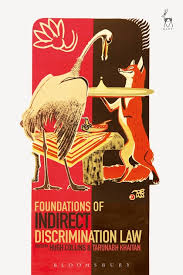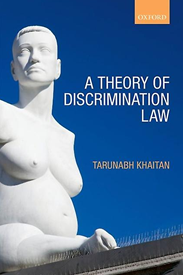Research

Foundations of Indirect Discrimination Law (2018)
Indirect discrimination (or disparate impact) concerns the application of the same rule to everyone, even though that rule significantly disadvantages one particular group in society. Ever since its recognition by the Supreme Court of the United States in 1971, liberal democracies around the world have grappled with the puzzle that it can sometimes be unfair and wrong to treat everyone equally. The law's regulation of private acts that unintentionally (but disproportionately) harm vulnerable groups has remained extremely controversial, especially in the United States and the United Kingdom. In original essays in this volume, leading scholars of discrimination law from North America and Europe explore the various facets of the law on indirect discrimination, interrogating its foundations, history, legitimacy, purpose, structure, and relationship with other legal concepts. The collection provides the first international work devoted to this vital area of the law that seeks both to prevent unfair treatment and to transform societies.

A Theory of Discrimination Law (2015)
Marrying legal doctrine from five pioneering and conversant jurisdictions with contemporary political philosophy this book provides a general theory of discrimination law. Part I gives a theoretically rigorous account of the identity and scope of discrimination law: what makes a legal norm a norm of discrimination law? What is the architecture of discrimination law? Unlike the approach popular with most textbooks the discussion eschews list-based discussions of protected grounds instead organising the doctrine in a clear thematic structure. This definitional preamble sets the agenda for the next two parts. Part II draws upon the identity and structure of discrimination law to consider what the point of this area of law is. Attention to legal doctrine rules out many answers that ideologically-entrenched writers have offered to this question. The real point of discrimination law this Part argues is to remove abiding pervasive and substantial relative group disadvantage. This objective is best defended on liberal rather than egalitarian grounds. Having considered its overall purpose Part III gives a theoretical account of the duties imposed by discrimination law. A common definition of the antidiscrimination duty accommodates tools as diverse as direct and indirect discrimination harassment and reasonable accommodation. These different tools are shown to share a common normative concern and a single analytical structure. Uniquely in the literature this Part also defends the imposition of these duties only to certain duty-bearers in specified contexts. Finally the conditions under which affirmative action is justified are explained.